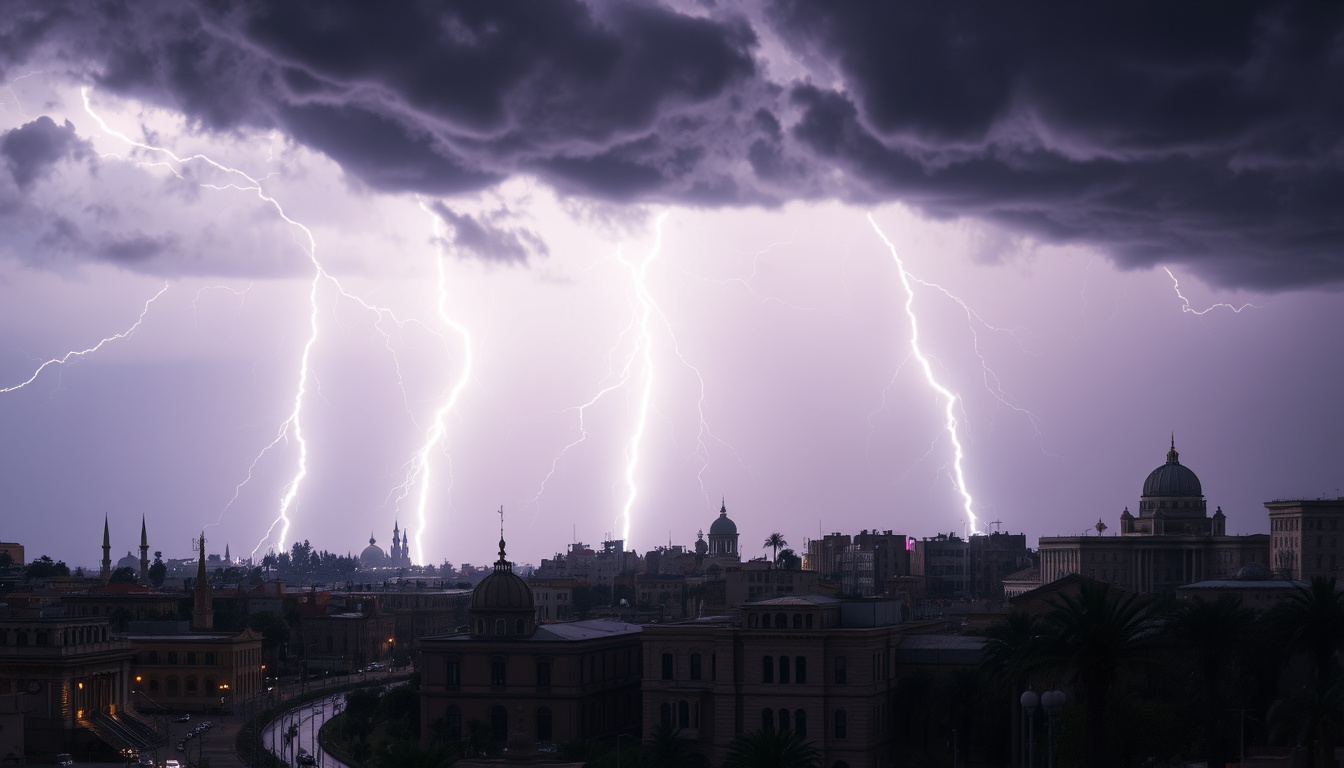On May 31, 2025, the city of Alexandria, Egypt, was thrust into chaos by a relentless and unexpected thunderstorm that unleashed a torrent of heavy rain, strong winds, and hail. This extraordinary weather event was unlike anything residents had seen during this season, leading to widespread destruction and an overwhelming response from local authorities.
As the storm rolled in, heavy rain transformed streets into raging torrents, effectively paralyzing the city. Within a short period, low-lying areas witnessed rapid flooding, with water rising to the doors of parked cars. The hail, comparable in size to large peas, battered roofs, windows, and vehicles, contributing to significant property damage. Winds of considerable strength uprooted trees, damaged signage, and brought down power lines, plunging many neighborhoods into darkness.
The coastal areas faced additional assaults from high waves, leading to significant damage to waterfront businesses and infrastructure. Social media erupted with videos showcasing the storm’s fury, depicting hail bouncing off sidewalks and relentless floodwaters rushing through the streets. In the face of this raging tempest, panic ensued as residents sought refuge in shops and cafés, where they were met with shattered glass from hail strikes.
In a response to the disaster, local authorities enacted a state of emergency. Rescue teams, bolstered by a fleet of water-pumping vehicles, rushed to aid those affected. Operations at Alexandria’s ports were suspended, with warnings issued to fishermen and boat owners to stay ashore until the weather improved. In the aftermath, hospitals reported treating individuals for minor injuries, primarily caused by falling debris, but fortunately, no serious injuries were documented.
The unusual storm was attributed to a combination of an unstable atmospheric front and an intensifying Mediterranean cyclone—a situation that meteorologists believe is becoming more common due to global climate change. In just a few hours, the city experienced rainfall that surpassed its typical monthly average, emphasizing the disruptive climate patterns impacting the region.
In response to the crisis, displaced families found temporary shelter in municipal schools and aid centers. Communities rallied in the face of adversity, with countless volunteers stepping forward to help clear debris and deliver essential supplies to those cut off by the flooding. While schools, universities, and kindergartens were closed, the community’s solidarity provided a glimmer of hope amid the turmoil.
Looking ahead, the governor of Alexandria prompted residents to exercise caution and limit unnecessary travel while agencies began to assess the damage comprehensively. Promises of compensation for the hardest-hit residents were made, and it was announced that significant upgrades to the city’s drainage system would be prioritized to mitigate future disasters.
Though tourism in Alexandria came to a halt due to the storm’s effects—impacting small businesses reliant on visitors—there is optimism for recovery. Meteorological forecasts suggested that weather conditions would improve within days, allowing emergency services to maintain their vigilant support for the community.
As Alexandria confronts the aftermath of this unprecedented weather event, the resilience of its residents shines through. The city has faced nature’s fury and is beginning the process of recovery, demonstrating a powerful spirit of unity and determination to overcome the challenges posed by our changing climate.

